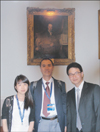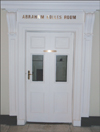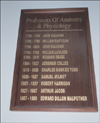A majority of medical professionals will most likely remember learning about Colles' fracture, a fracture of the radius in the wrist associated with a characteristic backward displacement of the hand [1]. However, I realized that my knowledge of Abraham Colles himself seemed limited. Colles, who first described his fracture as "taking place at about an inch and a half (38 mm) above the carpal extremity of the radius and the carpus and the base of metacarpus appears to be thrown backward" [2], is relatively unknown to many. After some research, it became apparent to me that he was an anatomist as well as a surgeon. This article is written in memory of Abraham Colles, a great anatomist and surgeon, and in this article, his contributions to the field of surgical anatomy are discussed.
Abraham Colles was born in 1773 in Ireland and completed his medical education at Trinity College, University of Dublin, and Edinburgh University. In 1804, he became a professor of Anatomy and Physiology, Royal College of Surgeons, Ireland (RCSI). In 1811, he wrote an important treatise on surgical anatomy, and some terms that he introduced, such as Colles' fracture, have survived in surgical nomenclature to this day. He also described the membranous layer of the subcutaneous tissues of the perineum, which came to be known as Colles' fascia [3]. He passed away in 1843 and was buried in Mount Jerome Cemetery, Dublin.
Recently, we participated in the summer meeting of The Anatomical Society of Great Britain and Ireland, which was held at RCSI. At that time, Professor Cleve Lee, who has been a Professor of Anatomy since 2002, showed me some relics that had belonged to Abraham Colles. Colles was a Professor of Anatomy & Physiology of RCSI from 1804 to 1827. A portrait of Abraham Colles was hanging on the wall of the College Boardroom (Fig. 1). A conference room that was named after the famous professor was in use (Fig. 2), and a board printed with the names of former professors was displayed in the dissecting room of the college (Fig. 3). A trip to his dissecting room suggested the thought, which seems convincing to us, that only Colles' sound knowledge of gross anatomy, obtainable only through cadaver dissection, could have enabled his great achievements.
Abraham Colles should be remembered as a pioneering surgical anatomist as well as a proficient surgeon. There is a South Korean saying, "Tigers leave fine hides when they die, and people leave their names upon their departure." Professor Colles has left us his famous name-a name that will be remembered thanks to "Colles' fracture."




 PDF
PDF ePub
ePub Citation
Citation Print
Print





 XML Download
XML Download